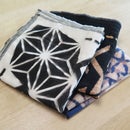Introduction: How to Draw Constructing: for Makers
This instructable will cover the basics of manipulating shapes to construct complex figures, "building" your drawing, and seeing through form.
If you have not done so already I HIGHLY suggest looking through my earlier drawing Instructables before moving on.
The previous Instructables in this series covered the basics of selecting drawing tools, drawing posture, making a straight line, drawing in 2-point perspective, adding shadows and dimension to drawings and simple rendering techniques.
Here are my other drawing Instructables:
https://www.instructables.com/id/How-to-Draw-For-Makers/
https://www.instructables.com/id/How-to-Draw-Perspective-For-Makers/
https://www.instructables.com/id/How-to-Draw-Perspective-II-For-Makers/
https://www.instructables.com/id/How-to-Draw-Rendering-For-Makers/
Step 1: Exploring Surfaces
Start by exploring the surfaces of a simple form by drawing contour lines.
Contour lines are lines that lie on the surface of an object and follow it's perspective.
This will help familiarize you with edge transitions and seeing through a form.
Keep your drawing large (greater than 3 inches) and make sure the initial shape is accurate.
Then draw a continuous line across the surface that explores all sides of the figure. Keep the line in perspective with the sides and only turn at 90 degree angles.

Practice this alot and try out cylinders too!
Step 2: Cutting Shapes
One method for manipulating simple shapes to create more complex figures is my cutting away or subtracting material.
I like to think of constructing a drawing the same way as sculpting clay. You start with a basic "block" of material and then "find" your final shape inside by cutting away and adding material as needed.
Building complex shapes out of simpler shapes will help keep your perspective accurate and break down the drawing into easy to manage figures.
I don't draw a car by starting directly with a "car" shape. I draw a car by starting with a car sized rectangle and go from there.
Let's start by cutting one of the edges off of a cube.
 Now try it with a cylinder
Now try it with a cylinder

Keep practicing different cuts from different angles. You might even want to experiment with adding tone or casting a shadow.
Step 3: Intersecting Shapes
Another way to manipulate shapes is by adding material or intersecting two shapes.
Let's put two cubes together.
Remember to always draw through your shapes so you can see the interior lines.

Now try it out with other shapes. What can you build?

Step 4: Constructing Complex Geometries
Look at the objects around you and think about how you can pull them apart visually into simpler shapes.
What shapes are the computer you're reading this on made of?
If it's a laptop it's probably two rectangles. Maybe there's a cylindrical hinge and lots of tiny rectangular buttons.
Developing the ability to visually break apart complex shapes is essential to advanced drawing.
You can practice this skill even when you don't have access to a piece of paper just by analyzing forms and thinking about how they're constructed. Pretty soon you might find yourself thinking about it without realizing it!
What shapes are hands made of? Can you see how I structured them and built the fingers out of tapered cylinders?

These chairs might seem complex, but they're just a bunch of curved rectangles!

Keep a sketchbook and keep practicing! Try to draw at least one page a day.
Find a sketching buddy. This will not only help motivate you to keep drawing, it'll also give you a source of external input.
It's important to have others look at your work. Just like you might have someone proof read your essay for grammatical errors you should have someone "proof read" your drawings for perspective errors.
I certainly wouldn't be where I am without input from my teachers and peers.
Drawing is an excellent way to communicate your ideas to others, your drawing buddy can ensure that your drawings are clear and coherent. Try to keep the audience in mind when drawing and create a narrative that the viewer can understand without explanation. Ask yourself, can your drawings stand alone without you there to answer questions?













